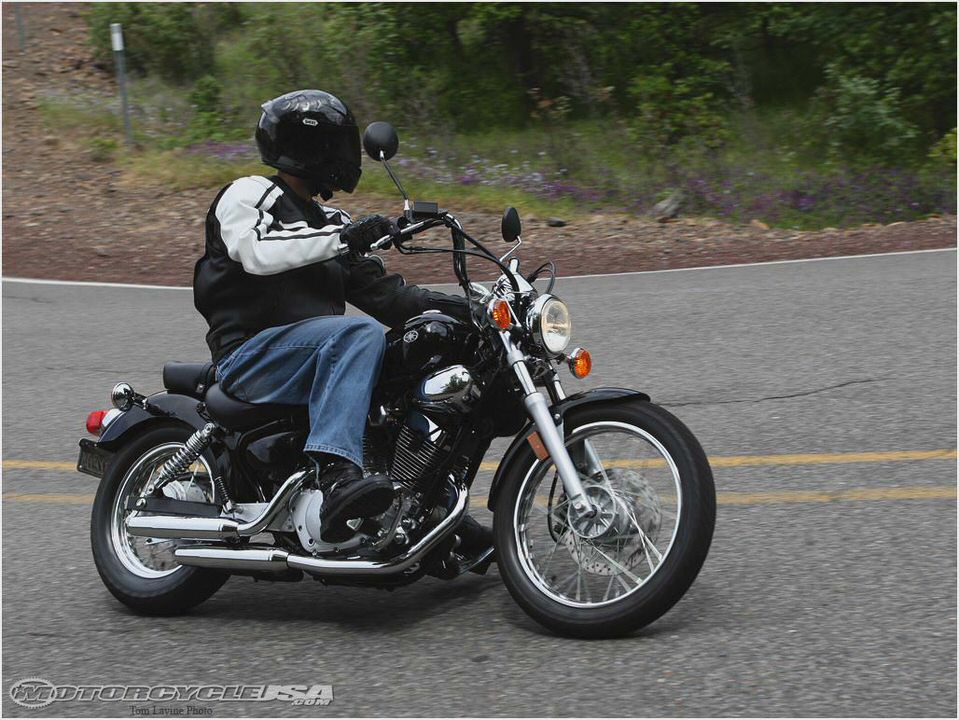
A beginner’s bike for almost everyone
Photos by Mike Maez
Years before I fully entered the world of motorcycles I daydreamed often about motorcycles I hoped someday would begin my two-wheeled riding career. For a while one bike was at the top of my wish list: the Yamaha Virago 535.
The 535 had everything going for it in my view: the requisite low-slung cruiser look and feel, plus a low seat height that helped banish any intimidation of learning to ride. The Virago 535 had a welcoming appearance, yet it still looked cool like the big-boy bikes.
Riders of All Experience Levels Apply Within
The small displacement of the 60-degree, air-cooled V-Twin, and a low seat height (27.0 inches) are leading qualities that attract new or re-entry riders to the V Star 250. But experienced riders not ashamed of riding what many would condescendingly dub a beginner’s bike should also find the V Star 250 appealing: its styling follows that of its larger stablemate, the 649cc V Star Custom, and the ergo layout offers room to move. But most impressive of all the 250’s traits to me is its exhaust note.
Although the V Star’s modest power delivery leaves no doubt this cruiser is in the 250cc class, you wouldn’t know this from the burly lumpity lump sound emanating from its dual chrome exhaust pipes; and their over/under orientation give this little Star some big bike attitude.
Simple pinstriping and a Star name badge on the 2.4-gallon fuel tank nicely accent a slick gloss black paint scheme, while spoke wheels (18-inch front, 15-inch rear) and a tasteful amount of chrome round out the V Star’s subtle but handsome look.
The aforementioned low saddle may draw in freshly minted riders, but a new-for-2012 drag-style handlebar lends to a surprisingly generous seat to handlebar relationship: riders standing around 5-feet 6-inches and above should find the rider triangle is open enough to prevent the feeling of riding a 4/5ths scale bike. However, the handlebar is on the narrow side and so sacrifices some steering leverage.
A relatively long 58.7-inch wheelbase seems counterintuitive for a beginner-esque scoot, yet this span gives the V Star a stable cruising platform.
The Star’s budget-minded price point is partly achieved by employing a traditional CV (constant velocity) carburetor rather than fuel injection. The carb suffers minor lag time in response at small throttle openings just above idle, but the likelihood is only experienced riders would take note of this small peccadillo.
Potentially bothersome to anyone is the V Star’s cold-blooded-ness; give it sufficient warm-up time to avoid stumbling away from stops or stalling altogether. Another demerit is the amount of clutch lever travel before the clutch engages.
Since this motorcycle will often get categorized as a bike for first-time riders, we enlisted a re-entry rider with limited saddle time to sample this V Star. Our newbie rider found this late-engaging clutch a trouble spot in her quest to get reacquainted with riding, as she found it difficult to finesse the bike cleanly away from a stop or during slow-speed maneuvers.
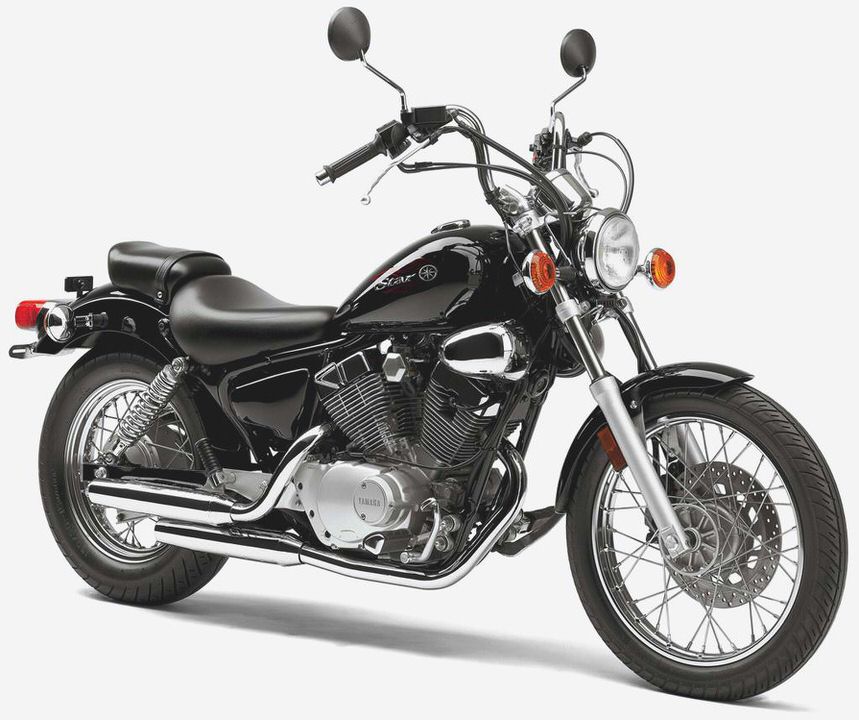
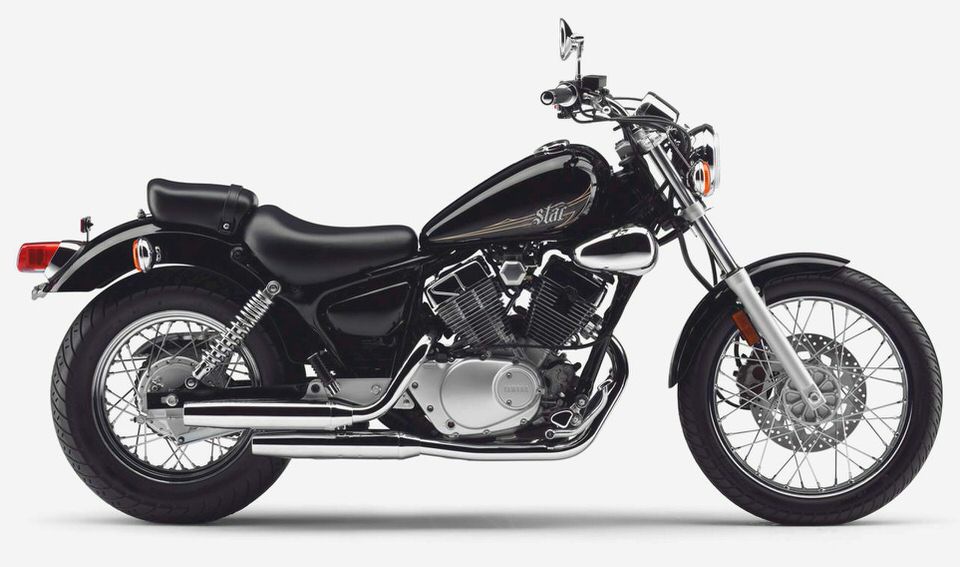
Content Editor Tom Roderick’s double-digit years of motorcycling experience give him the prudence to allow a wide margin of error for a bike like the V Star 250, but his keen senses couldn’t overlook the difficulty of finding neutral in the bike’s 5-speed gearbox. A persnickety neutral might only register as an annoyance to seasoned riders, but Tom rightly points out new riders might get frustrated by an elusive neutral.
A single, dual-piston sliding-pin-type front caliper gripping a single rotor is common fare in this class of motorcycle, as is the drum brake in the rear. Both brake sets are up to the task of slowing the V Star 250’s claimed wet weight of 323 pounds, but we would’ve appreciated additional initial bite from the front brake and more power overall from the drum brake.
Instrumentation is basic, with a speedometer as the sole gauge, but its glossy chrome gives it a classy look. Switchgear is also elemental, but each switch engages with a positive, solid feeling, and the mirrors’ good view isn’t obscured by excessive engine vibration. Lastly, it’s a simple feature, but the V Star 250’s hinged, locking gas cap isn’t always found in this segment.
A Lil’ Cruiser for Almost Any Rider
The small-displacement, beginner-oriented cruiser class is remarkably limited. At $4190 the V Star 250 has only one other current model-year competitor: the long-running 234cc 2012 Honda Rebel – also priced at $4190.
Suzuki has an especially attractive offering in the TU250X. which brings fuel injection to the 250cc class. However, if you’re particularly interested in the classic cruiser look, take note the $4099 single-cylinder TU is in the standard style, and its seat is 3.3 inches higher than the V Star’s saddle.
Our 5-feet 2-inch, female newish rider had a number of good things to say about the Star, and while she admitted she could probably acclimate to the V Star’s clutch lever feel, its late-engagement prevented her from immediately falling in love with the bike. Additionally, she felt the V Star was just a hair on the big side for her diminutive stature.
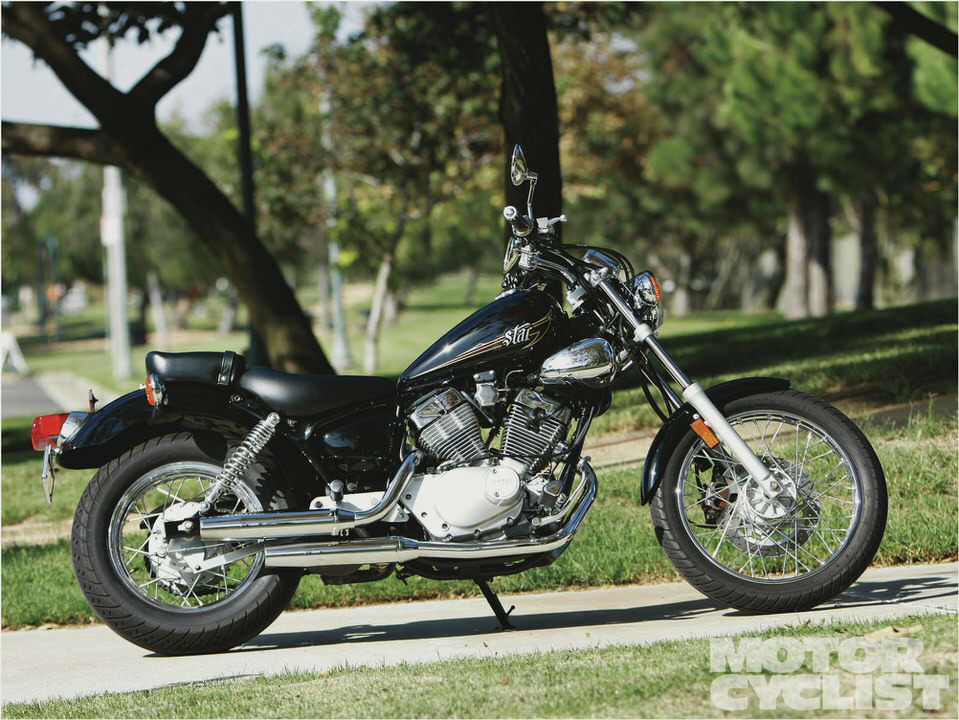
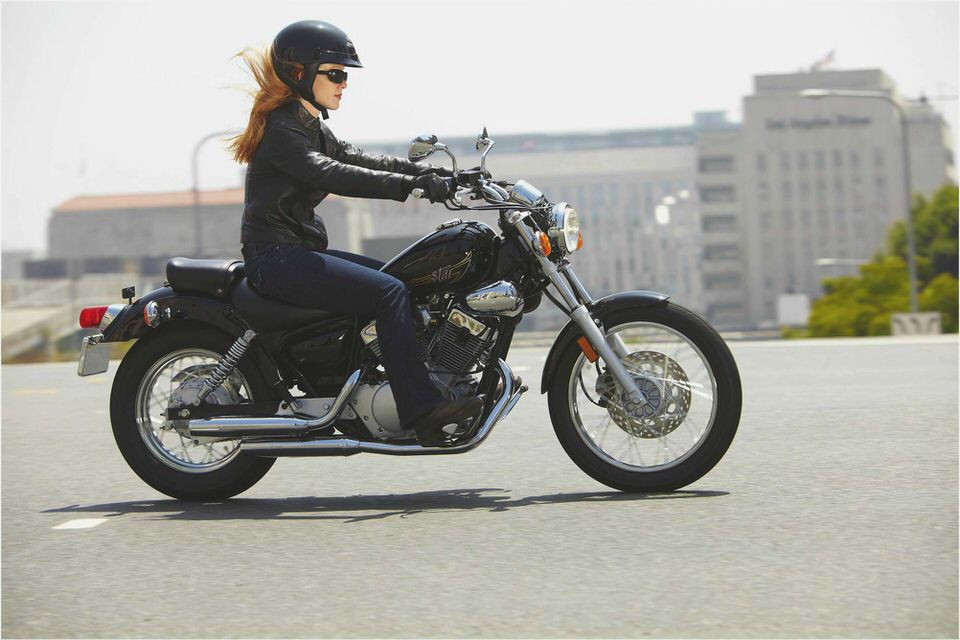
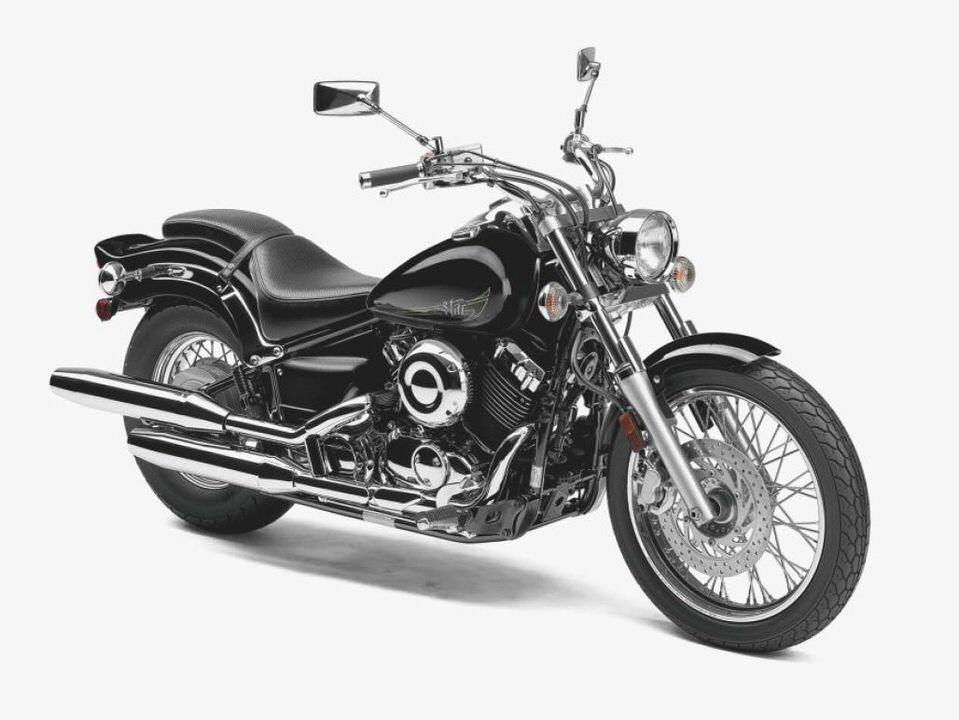
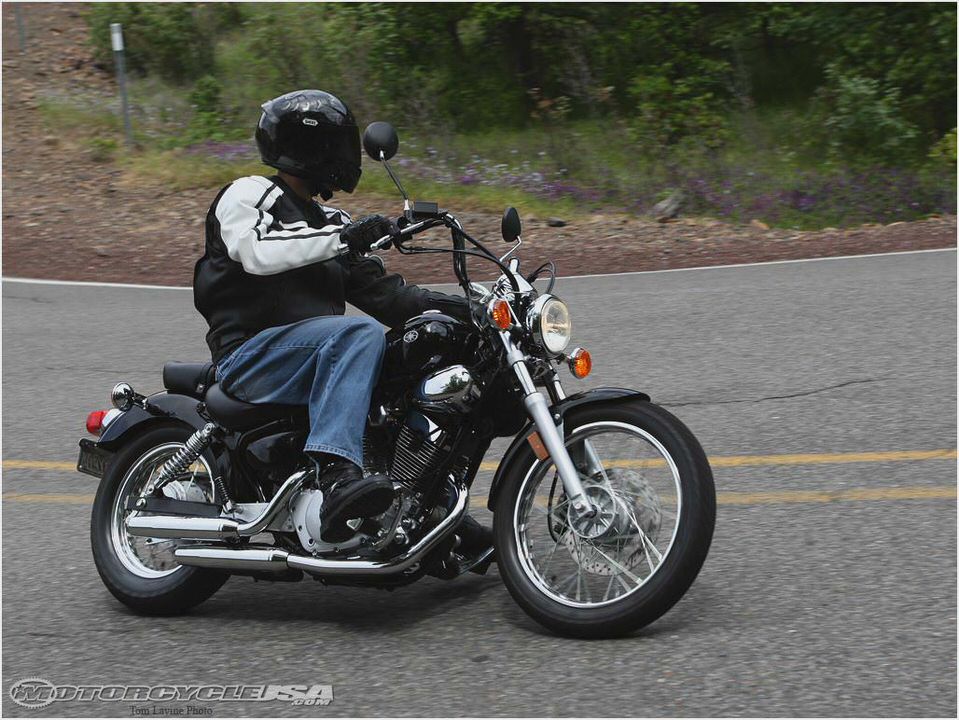
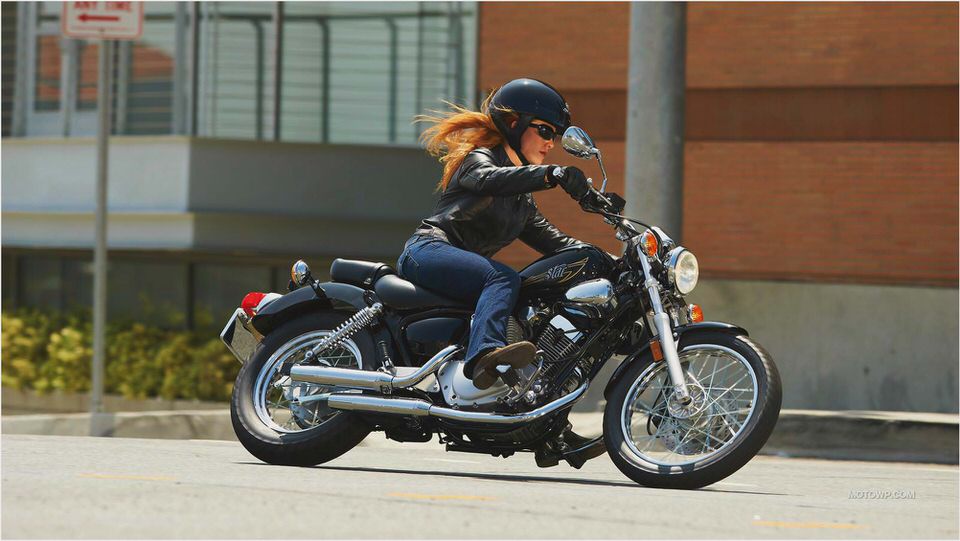
- 2013 Yamaha FJR1300A First Ride – Motorcycle USA
- 2009 Yamaha FZ6R Review –
- YAMAHA YZF-R6S(C) OWNER MANUAL Pdf Download.
- WiseBuyer’s Guides – yamaha xjr1300 bike road test
- Yamaha YZF-R1, YZF-R1 SP Repair Manual 2004-2006 Haynes 4605

